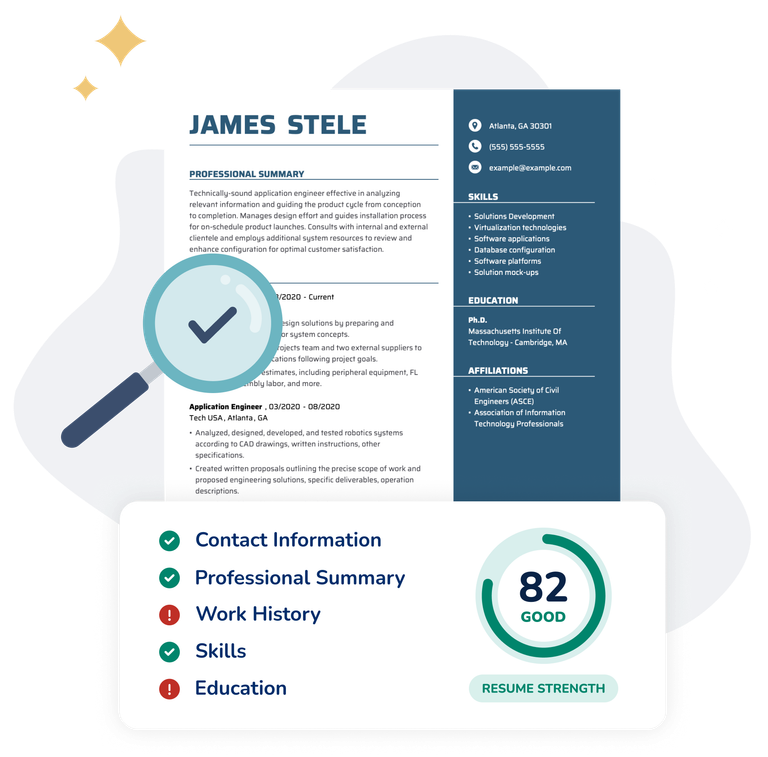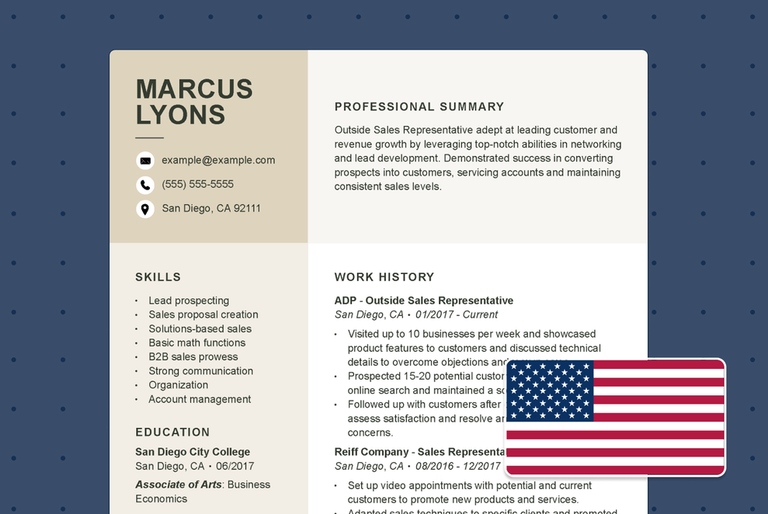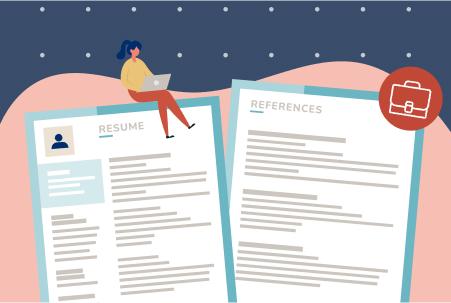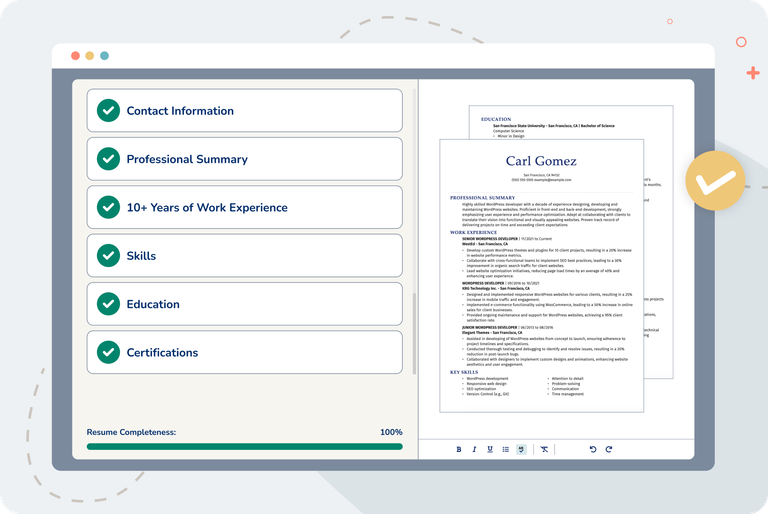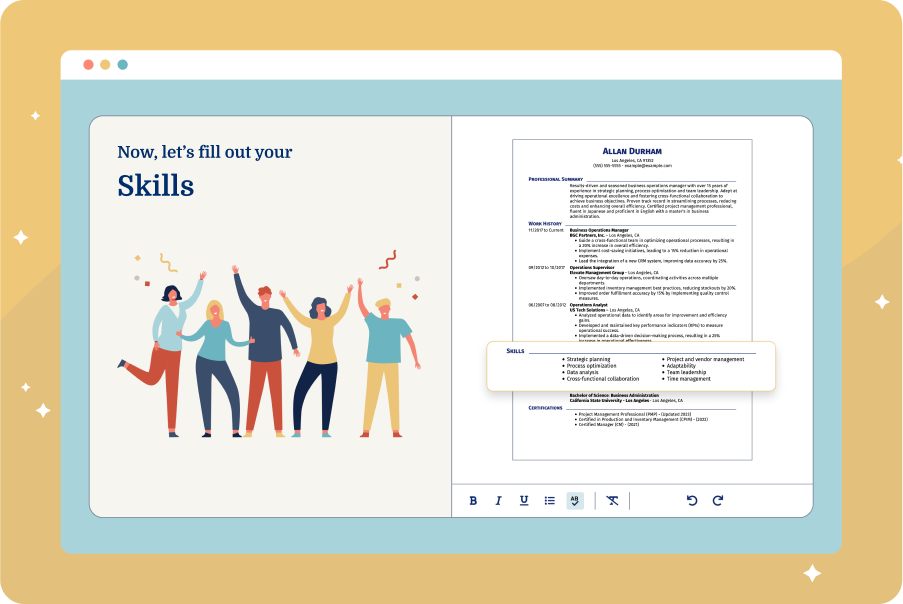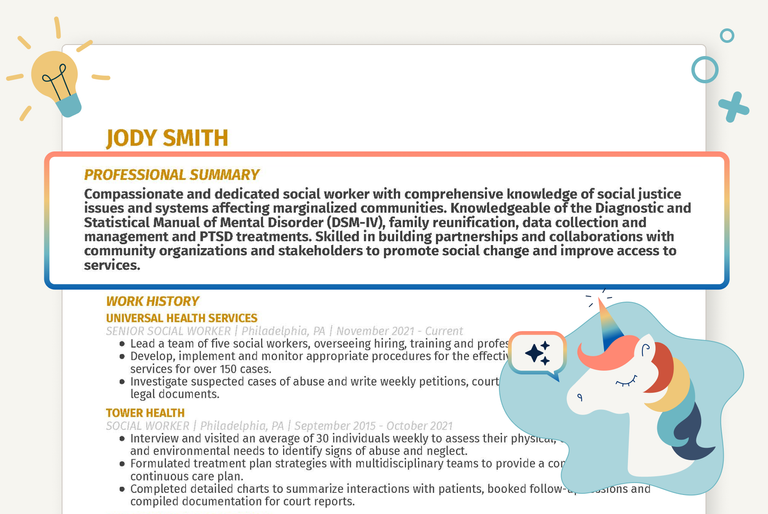How To List Security Clearance on a Resume

Our customers have been hired at: *Foot Note
If you hold a security clearance, you already have a valuable credential that sets you apart from other candidates, especially in fields like defense, government contracting, and cybersecurity.
A well-placed mention of your clearance can demonstrate your trustworthiness, save employers time during the hiring process, and open doors to roles that require vetted candidates.
In this guide, we’ll cover when and how to put security clearance on your resume, what types to list, and tips for showcasing it effectively, without compromising sensitive information.
What Is a Security Clearance?
A security clearance is an official authorization granted by a government agency that allows someone to access classified or sensitive information. It is typically required for jobs that involve national security, defense, intelligence, or working with confidential government data.
There are various levels of security clearance in the United States, each with distinct degrees of access and sensitivity. Here’s a quick breakdown:
- Confidential: The lowest level, granted for access to information that could cause damage to national security if disclosed.
- Secret: A mid-level clearance for more sensitive information that could cause serious damage if leaked.
- Top Secret: The highest level, for access to information that could cause exceptionally serious or irreparable damage to national security.
Some Top Secret clearances include additional categories, including:
- SCI (Sensitive Compartmented Information): Access to intelligence sources, methods, or data that require extra protection beyond Top Secret.
- SAP (Special Access Programs): Even more restricted programs that require strict need-to-know access and additional vetting.
Getting clearance involves a detailed background check and, in some cases, a polygraph test (also known as a lie detection test). Holding an active clearance demonstrates your trustworthiness and is often a key qualification for landing roles in highly secure or classified environments.
Example of Security Clearance on a Resume
Below is an example of how to list a security clearance on a federal resume. Unlike standard private-sector resumes, federal resumes often run two pages or more and require more detailed information about your work history, qualifications, and credentials.
Because clearances are highly relevant in many federal and military roles, it’s expected that you include them clearly, especially if they’re active or recently held.
You can edit the sample below directly in our Resume Builder to add your skills and qualifications:
When To Include Security Clearance on Your Resume
Explore common situations below where writing a resume that includes your security clearance details is required or beneficial for strengthening your candidacy.
The job posting mentions a clearance requirement
Include your clearance if the job description specifically states that a security clearance is required or preferred.
This is common in industries such as defense, government contracting, intelligence, cybersecurity, and certain areas of tech.
Many roles in federal agencies, military support services, or defense contractors clearly outline clearance requirements, often specifying the level (e.g., “Top Secret with SCI eligibility”).
Listing your clearance up front can help you create an ATS-friendly resume that passes initial screening software and shows employers you meet one of their core requirements.
You’re applying to government contractors or agencies
Include your security clearance on your federal resume when applying for roles with government agencies or contractors that handle sensitive or classified information.
If you're moving from one government agency, military branch, or cleared contractor role to another, it’s important to list your security clearance on your resume.
An active clearance shows that you’re already vetted for sensitive work, which can streamline the hiring process and make you a more attractive candidate for positions requiring discretion.
When you want to highlight specialized skills
Even if a clearance isn’t required for the role, you might still list it to emphasize qualities like reliability, integrity, and experience working in high-security environments.
This can be especially useful for transitioning from government to private-sector roles, where trust and discretion are highly valued, such as in cybersecurity, corporate security, or risk management.
Just be sure your clearance is relevant to the role and presented professionally, so it enhances rather than distracts from your transferable skills and qualifications.
Where to Put Security Clearance on a Resume
If your security clearance is relevant to the job you're targeting, you want to make sure it’s easy for hiring managers to find. Explore a few strategies for including clearance on your resume.
In your resume header
If your clearance is a major selling point or requirement, such as for government or defense roles, you can list it right at the top of your resume near your contact information.
Here is an example of a resume header that includes security clearance details:
John Stevens
Active Secret-Level Security Clearance
john.stevens@email.com | (555) 555-5555 | Washington, D.C.
In your professional summary
Your resume summary appears at the top of your resume, so including your clearance here helps recruiters quickly see that you meet one of their core requirements.
Keep it concise and pair it with your job title or area of expertise for added impact. For example:
“Systems engineer with over eight years of experience in aerospace and defense projects. Active Secret clearance and hands-on experience with DoD contract deliverables and compliance standards.”
In your work experience bullet points
You can also reference your security clearance directly in your job descriptions, especially if the clearance was required for the role.
This helps show that you've used your clearance in a professional setting and are familiar with working in secure or classified environments.
When writing your resume work history section, include the clearance level and describe the kind of work you performed without revealing any sensitive or classified details. For example:
IT Specialist | U.S. Air Force | 2019 – 2023
- Maintained active Top Secret/SCI clearance for over four years, supporting multiple classified operations without security violations.
- Managed 10+ secure communication systems across global operations, ensuring 99.9% uptime for mission-critical transmissions.
- Ensured 100% compliance with federal cybersecurity protocols during annual audits and daily operations in classified environments.
Use strong action verbs like “managed,” “supported,” “maintained,” or “executed” when describing roles that involved your security clearance. This helps emphasize your responsibility and impact.
In a dedicated security clearances section
If you hold more than one clearance or have progressed through different levels, a dedicated section can help highlight that experience clearly.
This approach works well for federal resumes or for jobs where clearance is a core requirement. Keep it clean, professional, and limited to publicly shareable details. For example:
Security Clearances
- Secret Clearance | June 2021 – Present
- Confidential Clearance | March 2017 – May 2021
What to Avoid When Listing Security Clearance on a Resume
While it's smart to mention your clearance when it's relevant, it's just as important to avoid sharing sensitive information. Here’s what to leave out:
- Classified project details: Even if you worked on high-level programs, do not describe classified missions, technologies, or operations, even in vague terms. Stick to unclassified, general descriptions of your duties and accomplishments.
- Clearance numbers or issuing agencies: You don’t need to include the clearance ID number, the agency that granted it (e.g., NSA, DoD), or any internal codes. That kind of detail isn’t relevant to most hiring managers and can raise security concerns.
- Exact investigation dates: It's okay to say your clearance is "active" or "eligible for reinstatement," but avoid including the precise date of your background investigation or adjudication on your resume.
- Inaccurate clearance level: Only list the clearance level you currently hold or recently held, and be honest. Misrepresenting your clearance can be a major red flag and even disqualify you from consideration.
Key Takeaways
- Include your security clearance on your resume when applying for federal roles, government contractors, or positions that require handling classified information.
- You can list your clearance in your resume header, professional summary, work experience, or even create a dedicated security clearances section if needed.
- When mentioning clearance in your experience section, pair it with impact—e.g., “Maintained Secret clearance while managing 10+ secure systems with 99.9% uptime.”
- Avoid including investigation dates, clearance adjudication information, issuing agencies, or case numbers. Stick to the level, status, and general timeframe.
- Keeping your resume clear, professional, and within the bounds of security protocol shows that you understand how to handle sensitive information.
FAQ
Should you put security clearance on a resume?
Yes, you should put security clearance on your resume if it’s relevant to the job, especially if it’s listed as a requirement in the job description.
Including your clearance can immediately signal to hiring managers that you meet one of their key qualifications. It shows you’ve already been thoroughly vetted by the appropriate authorities, which can streamline the hiring process and reduce onboarding time.
Employers often prefer candidates who are already cleared because it saves them the cost and time of sponsoring a new clearance.
Can I include the date my clearance was granted?
Yes, including the month and year your clearance was granted or last updated can be helpful, especially for roles where active or recently held clearances are preferred.
This detail can be especially important if the job requires an active clearance or one that hasn’t lapsed beyond a certain timeframe.
It also helps recruiters differentiate between candidates with long-expired clearances and those who are still eligible for access to sensitive information.
However, when listing clearance information, it’s important to stay within the boundaries of what’s appropriate to disclose.
Avoid mentioning investigation IDs, adjudication outcomes, specific dates of investigation, or any classified or sensitive details related to your clearance.
How do you list inactive security clearance on a resume?
While most employers prioritize candidates with active security clearances, listing an inactive clearance can still work to your advantage, especially if it is eligible for reinstatement.
Clearances can often be reactivated within a certain timeframe (usually within 24 months of expiration), which means employers may not need to start the clearance process from scratch. To list an inactive clearance effectively, include both the clearance level and its current status. Here’s an example of how to list inactive security clearance on a resume:
“Secret Clearance – Inactive, Eligible for Reinstatement”
This lets hiring managers know you’ve previously been vetted and that you may be able to return to cleared work relatively quickly and without the full investigation process.
Should I mention security clearance in my cover letter?
Yes, you can mention your security clearance in your cover letter if it’s relevant to the job you’re applying for.
This is especially important for roles in federal agencies, defense contracting, or industries where access to classified or sensitive information is required or preferred.
Including your clearance early in the letter shows you meet a key qualification and are ready to contribute without the employer needing to initiate the lengthy clearance process. It signals that you’re already trusted to work in secure environments, which can be a major advantage. Here’s an example of how to mention it naturally in your cover letter:
“I currently hold an active Secret clearance, which enables me to support secure, mission-critical projects from day one.”
For help crafting a compelling and well-structured cover letter, you can explore our cover letter examples tailored to different roles, industries, and experience levels.
Our customers have been hired at:*Foot Note


